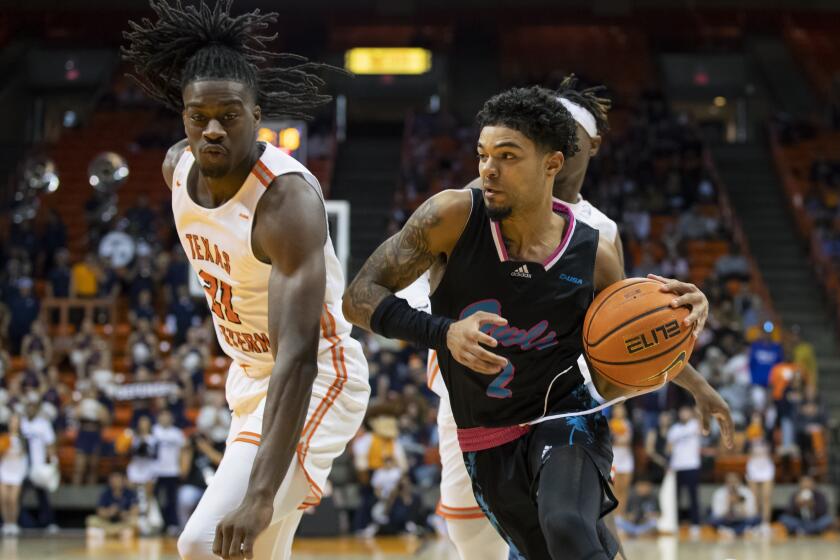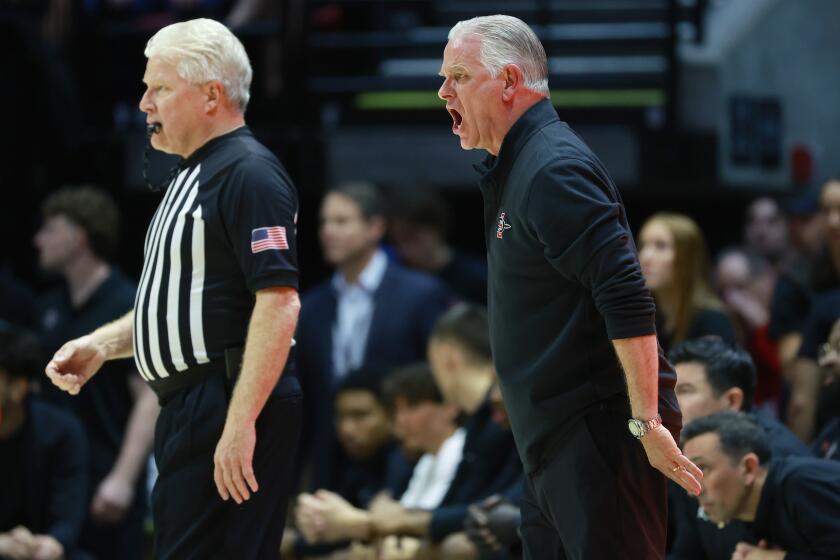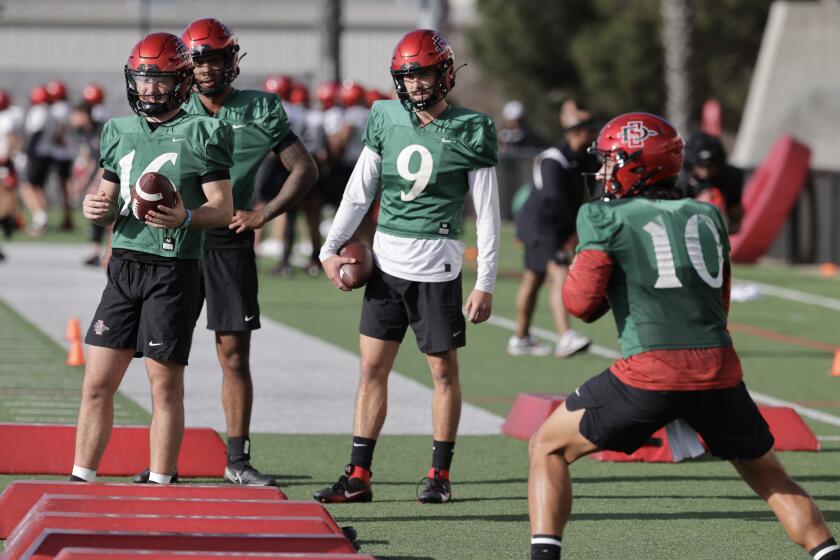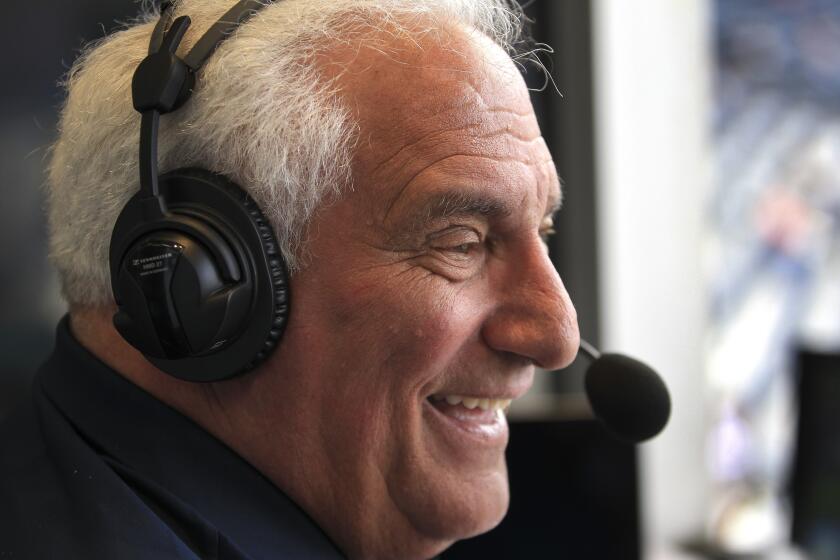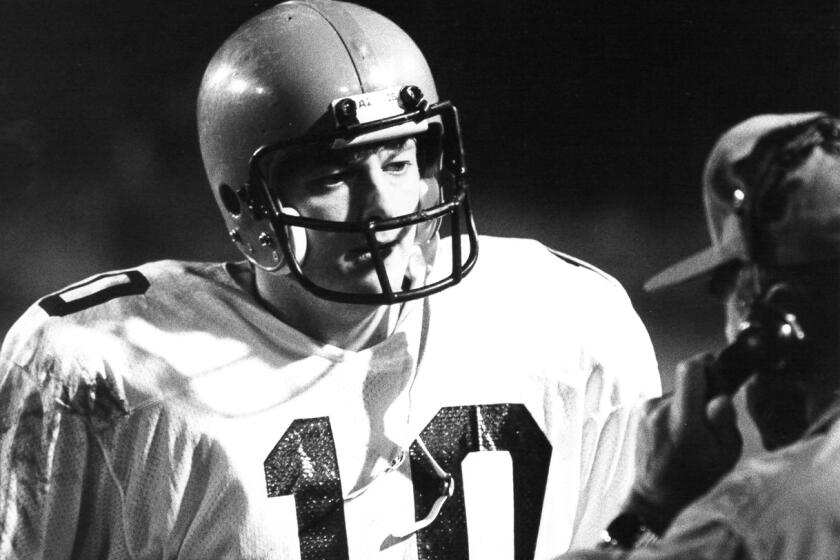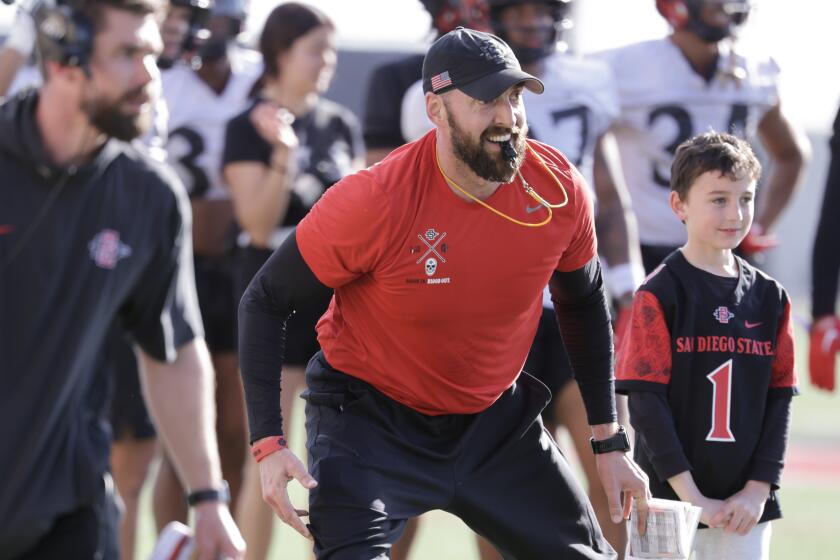3 thoughts: SDSU 51, Bakersfield 27
Three thoughts from San Diego State’s 51-27 win against Cal State Bakersfield on Thursday night Viejas Arena:
1. Offense: BYU, the Aztecs’ opening opponent at the Maui Invitational on Monday night (8:30 p.m. PST), is averaging 95.7 points through three games. SDSU is averaging 61.
The Aztecs made half their shots against CSUN last Friday, and then missed 76 of 106 shots since for a positively putrid shooting percentage of .283. But as similar as the numbers were, the Utah and Bakersfield games were different, which is a good or bad thing depending on your perspective.
Against the 25th-ranked Utes and their pair of 7-footers, the Aztecs attempted only nine 3-pointers and attacked the paint, often chucking up wild shots at the rim that had no chance. Against Bakersfield, they got open looks against a compact 2-3 zone, attempted 24 3-pointers – more than in any game last season – and missed all but three of them.
“(Against Utah), we had 13 second-half shots that we would have to get lucky to make and that’s way too many,” coach Steve Fisher said Thursday. “I know we didn’t have close to that tonight. We had shots, they just didn’t go in. I think we started thinking about it a little bit, and you can’t do that.”
So what’s worse: that the Aztecs took bad shots, or that they got good shots and missed them? One can be explained away by poor execution early in the season against a Top 25 team with 7-footers clogging the lane. The other may be an indication of merely a slump, or maybe a deeper problem. Stay tuned.
2. Offense, part II: The Roadrunners didn’t fiddle around with a man defense on early possessions and then switch to a zone, as teams often will. They went straight to the zone after losing the opening tip.
They won’t be the first team. Dave Rose’s teams at BYU have always survived on a heavy diet of 2-3 zone, with much success in the days when the Cougars were in the Mountain West (they won their last three trips to Viejas Arena primarily playing zone).
Said Fisher: “If I were a team right now, I’d say: ‘Let’s zone them and let’s make them make some shots.’ I’m hoping that we’ll get zoned, and I’m confident that we’ll make some shots in Maui.”
One player who won’t be making them in Maui is sophomore Matt Shrigley, who hits the two-week mark today in the four weeks projected for the broken bone in his left elbow to heal. He was the team’s most accurate perimeter shooter during six weeks of preseason practice, but it’s probably unfair to label him a shooting savior.
He made 35.4 percent of his 3s last season, but it was usually feast or famine. He had a six-game stretch in January and February where he didn’t make a 3, going 0 of 16. Then he made 4 of 7 against Utah State. Two weeks later, he was 4 of 5 at UNLV. He’ll help, certainly. But the issue runs deeper than any single player.
3. Papal entrance: Freshman Malik Pope made his much-anticipated debut, getting a standing ovation from the Viejas crowd when he checked in for the first time. There’s a chance we might not see him again until mid-December, or least not with heavy minutes.
The Aztecs coaches looked at the schedule, with the potential for three tough opponents in Maui on the immediate horizon followed by games against USD and at Washington, and figured it was now or December. Fisher said Pope will suit up in Maui and beyond but made no promises that he would play.
Forty-four seconds after he subbed in, the Aztecs had a baseline inbounds and ran their favorite play for Pope to get the ball at the low block. He caught it, turned toward the basket … and turned it over. Welcome to college basketball. He settled down as the game went on, and even if he wasn’t always in the right spots, his freakish length – he’s probably the team’s tallest player, a legit 6-foot-10 – caused the Roadrunners fits.
“He showed that he hasn’t played competitively in about two years,” Fisher said. “He caught himself standing around a little at the defensive end, not sure who he was supposed to rotate to or who he was guarding. But that’s natural. He hasn’t played in a while. We’re going to have to be patient with him and show this film to him and say, ‘Here are all of the things than you can do better,’ all things that a month or two from now won’t happen.”
His teammates gaze into the future and like what they see.
“Malik has NBA written all over him,” Aqeel Quinn said. “(Once) he’s comfortable, the opposing team will be in trouble … It’s definitely fun to see Malik back on the court, because in practice he is fun to watch.”
The key word in all that: patience.
Sign up for U-T Sports daily newsletter
The latest Padres, Chargers and Aztecs headlines along with the other top San Diego sports stories every morning.
You may occasionally receive promotional content from the San Diego Union-Tribune.



